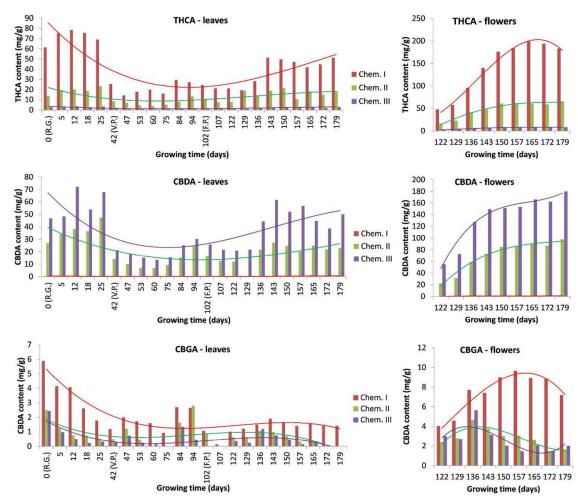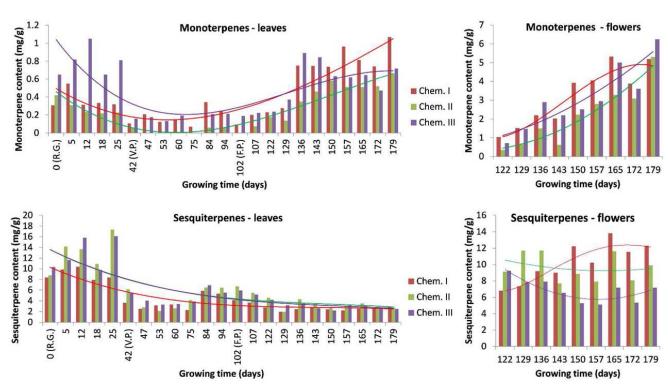What are Terpenes?
Terpenes, also known as isoprenoids, are a large class of organic compounds composed of repeating units of a five-carbon molecule called isoprene. These compounds are classified based on the number of isoprene units they contain, with monoterpenes (C10), sesquiterpenes (C15), diterpenes (C20), triterpenes (C30), and tetraterpenes (C40) being the most common categories. Additionally, terpenes can further be categorized into different subclasses based on their structural variations, such as hemiterpenes, sequiterpenes, and polyterpenes.
Terpenes Metabolome Analysis Services at Creative Proteomics
Targeted Terpene Profiling: Creative Proteomics offers targeted analysis of specific terpenes or groups of terpenes in various sample types. This service allows researchers to precisely quantify terpenes of interest, enabling detailed investigations into their functions and metabolic pathways.
Untargeted Terpene Discovery: By employing untargeted metabolomics approaches, we can perform comprehensive terpene profiling to identify and quantify a wide range of terpenes present in a given sample. This service provides a broader view of terpene diversity, facilitating the discovery of novel compounds and metabolic pathways.
Terpene Quantification: The accurate quantification of terpenes is crucial for understanding their biological significance. We employ validated quantitative methods to measure terpene concentrations, enabling precise comparisons between different samples and conditions.
Metabolic Pathway Analysis: By combining advanced analytical techniques and bioinformatics tools, we can map out the biosynthetic routes of terpenes, unraveling the enzymatic reactions and genes involved in their production.
For these projects, we utilize state-of-the-art mass spectrometry instruments, such as the Agilent 6550 iFunnel Q-TOF LC/MS system and the Thermo Scientific Q Exactive Plus Orbitrap LC/MS system. These high-resolution mass spectrometers ensure accurate identification and quantification of terpenes, providing valuable insights into their metabolic profiles. In addition, we are equipped with GC-FID (Gas Chromatography with Flame Ionization Detector) for terpene analysis.
 Workflow for Plant Metabolomics Service
Workflow for Plant Metabolomics Service
List of Terpenes Analyzed (including but not limited to)
| Terpenes Subclass |
Compounds |
| Monoterpenes |
α-Pinene, β-Pinene, Limonene, Linalool, Geraniol, Menthol, Terpinene, Myrcene, Camphene, Citronellal, Citral, Terpineol, Pulegone, Carvone, Phellandrene, Geranyl acetate, Citronellol, Bornyl acetate, α-Terpineol, Thymol, Carvacrol, Geranylgeraniol |
| Sesquiterpenes |
β-Caryophyllene, α-Humulene, Farnesene, Cedrene, Bisabolene, Nerolidol, Valencene, Patchoulol, Germacrene, Caryophyllene oxide, Humulene oxide, Patchouli alcohol, Santalol, Bisabolol, Nerol, α-Bisabolol, Zingiberene, Elemene |
| Diterpenes |
Taxol, Gibberellin A3, Sclareol, Forskolin, Carnosic acid, Isopimara-7,15-diene, Retinol (Vitamin A1), Retinal (Vitamin A aldehyde), Steviol glycosides, Betulinic acid, Glycyrrhizic acid, Ursolic acid, Maslinic acid, Pomolic acid, Soyasaponin |
| Triterpenes |
Betulin, Ursolic acid, Oleanolic acid, Asiatic acid, Lupeol, Glycyrrhizin, Boswellic acid, Guggulsterone, Cycloartenol, Lanosterol, Asiaticoside, Betulinic acid, Glycyrrhizic acid, Ursolic acid, Maslinic acid, Pomolic acid, Soyasaponin |
| Tetraterpenes |
β-Carotene, Lycopene, Zeaxanthin, Astaxanthin, Lutein, Canthaxanthin, Cryptoxanthin, Rubixanthin, Violaxanthin, Neoxanthin, Phytol, Neurosporene, Antheraxanthin, Cryptoxanthin, Zeinoxanthin, Rubixanthin, Neoxanthin, Canthaxanthin |
Sample Requirements for Terpenes Assay
| Sample Types |
Minimum Sample Size |
| Plant Samples |
Roots, stems and leaves, floral parts, fruits/seeds, rhizomes, buds/tender leaves, tissue sections, pollen, bark, trunk/wood, resin/gum, resin acids, seedlings/young plants, rhizosphere soil, root exudates. |
100 mg - 1 g |
| Animal Samples |
Tissues |
100 mg - 1 g |
| Cell Samples |
Cells and Culture |
106 - 108 cells |
Why Need Terpene Analysis?
Chemotaxonomy and Phylogenetic Studies: Terpenes can serve as chemical fingerprints that aid in classifying and differentiating organisms at various taxonomic levels. Analyzing the terpene profiles of different species allows researchers to gain insights into evolutionary relationships and phylogenetic studies.
Aroma and Flavor Development: Terpenes are responsible for the characteristic scents and flavors found in numerous plants and fruits. By analyzing terpenes, researchers can identify the compounds contributing to specific aromas, enabling industries such as perfumery, food, and beverage to develop and optimize their products.
Medicinal Properties: Many terpenes possess bioactive properties and exhibit potential therapeutic effects. Analyzing terpenes allows researchers to identify and quantify these compounds, facilitating drug discovery and the development of natural products with pharmaceutical applications.
Ecological Interactions: Terpenes play a crucial role in plant defense mechanisms and interactions with other organisms. Analyzing terpene profiles allows researchers to unravel the chemical communication between plants, insects, and other organisms, providing insights into plant-insect interactions and ecological processes.
Plant Breeding and Improvement: Terpene analysis can assist in plant breeding programs by identifying and quantifying desirable terpene profiles associated with specific traits, such as disease resistance, stress tolerance, or enhanced flavor and aroma. This knowledge can guide the selection and breeding of plants with improved characteristics.
Quality Control and Product Authentication: Terpene analysis is crucial for quality control in industries such as agriculture, food, and cosmetics. It ensures the authenticity and integrity of products by verifying the presence and concentration of specific terpenes, helping to detect adulteration or substitution.
Environmental Studies: Terpenes emitted by plants impact the atmosphere and contribute to air pollution, climate regulation, and the formation of secondary organic aerosols. Analyzing terpene emissions and their interactions with environmental factors provides insights into their ecological impact and helps in understanding global environmental processes.
Case 1. Cannabinoids and Terpenes in Cannabis sativa: Chemotype-Dependent Analysis
Background:
Cannabis sativa is a widely used illicit plant with potential medicinal properties. It contains various cannabinoids and terpenes, some of which have been extensively studied for their therapeutic effects in treating medical conditions like cancer, HIV/AIDS, chronic pain, epilepsy, and neurodegenerative diseases. The chemotype of the plants, based on the ratio of major cannabinoids THCA and CBDA, is stable during growth, allowing for early identification of drug-type plants.
Sample:
The study involved approximately 50 clones of standardized mother plants, divided into three chemotypes (I, II, and III). The plants were grown indoors under controlled conditions with specific light cycles and transferred to different pot sizes during their growth phases.
Technical Platform and Procedure:
The analysis of cannabinoids was performed using an HPLC system with a Nucleosil C8 column and a binary A/B gradient. Terpene analysis was conducted through GC-MS, using a DB5 column. External calibration and internal standard methods were employed for quantification. Data analysis included multivariate techniques like PCA and PLS to identify characteristic terpenes and build regression models against maturation time.
Results
The evolution of major cannabinoids (THCA, CBDA, CBGA) and terpenes was studied throughout the plant's growth period, from vegetative to flowering stages. Different chemotypes exhibited distinct patterns in cannabinoid and terpene content. Chemotype I showed the highest concentrations of CBGA and CBC. Terpenes were found to act synergistically with cannabinoids, and chemotype-dependent terpene distributions were observed.
 Evolution of the THCA, CBDA, and CBGA content in leaves and flowers during the growth of plants from chemotypes I, II, and III
Evolution of the THCA, CBDA, and CBGA content in leaves and flowers during the growth of plants from chemotypes I, II, and III
 Evolution of total monoterpene and sesquiterpene content in leaves and flowers during the growth of plants from chemotypes I, II, and III.
Evolution of total monoterpene and sesquiterpene content in leaves and flowers during the growth of plants from chemotypes I, II, and III.
Reference
- Aizpurua-Olaizola, Oier, et al. "Evolution of the cannabinoid and terpene content during the growth of Cannabis sativa plants from different chemotypes." Journal of natural products 79.2 (2016): 324-331.


 Workflow for Plant Metabolomics Service
Workflow for Plant Metabolomics Service Evolution of the THCA, CBDA, and CBGA content in leaves and flowers during the growth of plants from chemotypes I, II, and III
Evolution of the THCA, CBDA, and CBGA content in leaves and flowers during the growth of plants from chemotypes I, II, and III Evolution of total monoterpene and sesquiterpene content in leaves and flowers during the growth of plants from chemotypes I, II, and III.
Evolution of total monoterpene and sesquiterpene content in leaves and flowers during the growth of plants from chemotypes I, II, and III.